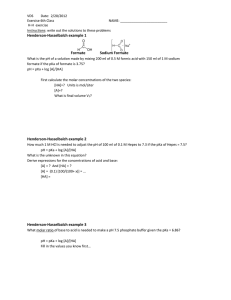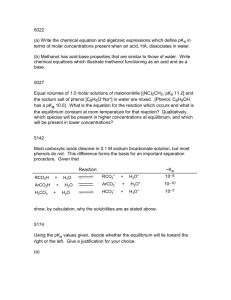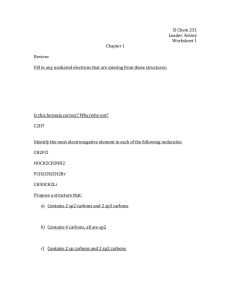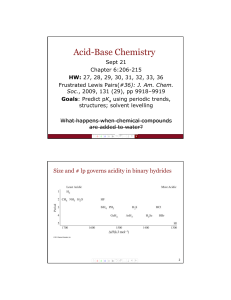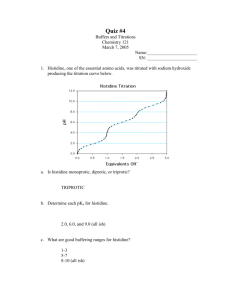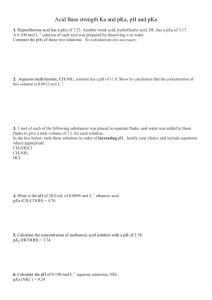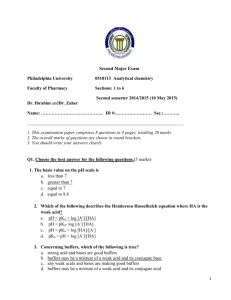Reading Guide
advertisement
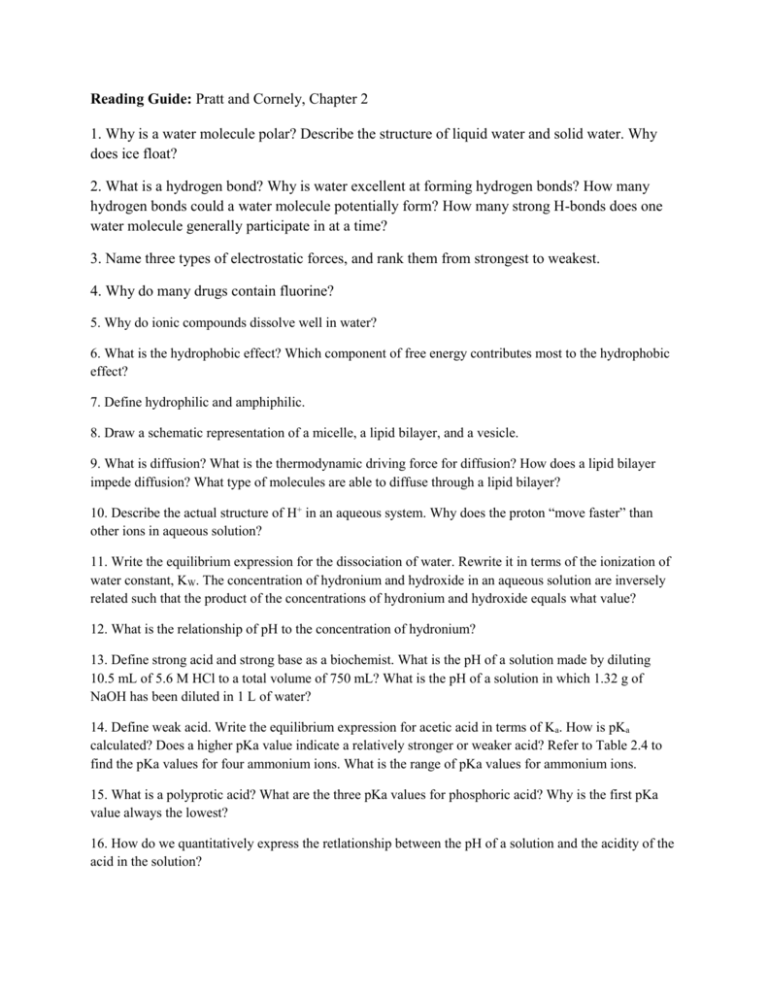
Reading Guide: Pratt and Cornely, Chapter 2 1. Why is a water molecule polar? Describe the structure of liquid water and solid water. Why does ice float? 2. What is a hydrogen bond? Why is water excellent at forming hydrogen bonds? How many hydrogen bonds could a water molecule potentially form? How many strong H-bonds does one water molecule generally participate in at a time? 3. Name three types of electrostatic forces, and rank them from strongest to weakest. 4. Why do many drugs contain fluorine? 5. Why do ionic compounds dissolve well in water? 6. What is the hydrophobic effect? Which component of free energy contributes most to the hydrophobic effect? 7. Define hydrophilic and amphiphilic. 8. Draw a schematic representation of a micelle, a lipid bilayer, and a vesicle. 9. What is diffusion? What is the thermodynamic driving force for diffusion? How does a lipid bilayer impede diffusion? What type of molecules are able to diffuse through a lipid bilayer? 10. Describe the actual structure of H+ in an aqueous system. Why does the proton “move faster” than other ions in aqueous solution? 11. Write the equilibrium expression for the dissociation of water. Rewrite it in terms of the ionization of water constant, KW. The concentration of hydronium and hydroxide in an aqueous solution are inversely related such that the product of the concentrations of hydronium and hydroxide equals what value? 12. What is the relationship of pH to the concentration of hydronium? 13. Define strong acid and strong base as a biochemist. What is the pH of a solution made by diluting 10.5 mL of 5.6 M HCl to a total volume of 750 mL? What is the pH of a solution in which 1.32 g of NaOH has been diluted in 1 L of water? 14. Define weak acid. Write the equilibrium expression for acetic acid in terms of Ka. How is pKa calculated? Does a higher pKa value indicate a relatively stronger or weaker acid? Refer to Table 2.4 to find the pKa values for four ammonium ions. What is the range of pKa values for ammonium ions. 15. What is a polyprotic acid? What are the three pKa values for phosphoric acid? Why is the first pKa value always the lowest? 16. How do we quantitatively express the retlationship between the pH of a solution and the acidity of the acid in the solution? 17. A 50 mM solution of imidazole (conjugate acid pKa = 7.0) is adjusted to pH 6.4. What percentage of the imidazole is in its conjugate acid form? 18. Draw the major ionic form of phosphoric acid at pH 5. 19. Using Figure 2.17 as a model, draw the titration curve of ammonium with pH as a function of % acid dissociation. Label the midpoint. What is the effective buffering range of ammonia/ammonium? 20. How many mL of a5 M sodium borate solution must be added to a 200mL solution of 50 mM boric acid in order for the pH to be 9.6? 21. Why can carbonate, with a pKa of 6.1 serve as a physiological buffer even though it is more than one pKa unit away from the typical physiological pH of 7.4?
